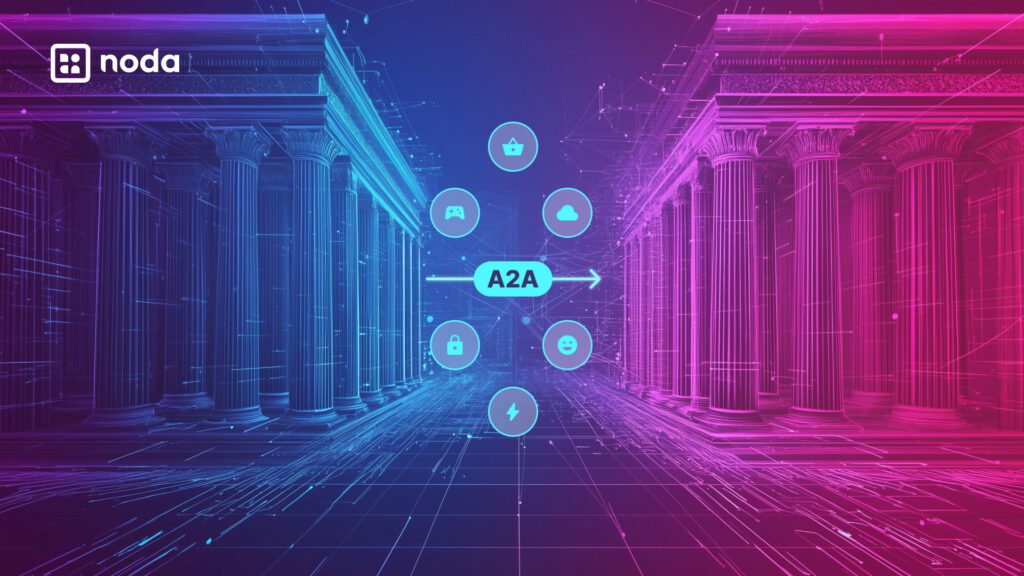
A new era of faster, cheaper, and more efficient payments is here. Account-to-account (A2A) payments are transforming how businesses handle transactions, making them a top choice for industries like e-commerce, gaming, and beyond. With A2A payments projected to grow from 60 billion transactions in 2024 to 186 billion by 2029, this technology is set to revolutionise payments.
What are A2A payments?
A2A payments move money directly between bank accounts, eliminating intermediaries like card networks. This direct transfer method offers lower costs, enhanced security, and faster processing, making it a compelling alternative to traditional payment systems. While the concept isn’t new, the rise of open banking has made A2A payments more accessible and versatile.
How A2A payments work
A2A transactions are typically categorised as either push or pull payments:
These methods provide flexibility for different use cases, from e-commerce purchases to subscription billing.
Applications of A2A payments
A2A payments are widely used across various industries, each benefiting from their unique advantages:
The role of open banking in A2A payments
Open banking has significantly enhanced A2A payments by introducing secure, API-based data sharing. Payment Initiation Services (PIS), powered by open banking, enable businesses to initiate payments on behalf of their customers directly from their bank accounts. While A2A and open banking payments are often used interchangeably, PIS represents a specific subset of A2A transactions.
Benefits of A2A payments
A2A payments provide numerous advantages for businesses and customers alike:
A2A payment providers
Several companies offer A2A payment solutions, helping businesses streamline payments and enhance customer satisfaction. For example, Noda provides seamless integration with over 2,000 banks across 28 countries, supporting multiple currencies and offering plugins for platforms like WooCommerce and Magento. With advanced features like AI-powered routing and embedded payment links, Noda simplifies payment processing for businesses of all sizes.
Why A2A payments are the future
As businesses seek faster, more secure, and cost-effective payment solutions, A2A payments are becoming the go-to option. By leveraging the advantages of open banking, they provide a modern alternative to traditional methods, driving growth and innovation across industries.
Are you ready to streamline your payments and stay ahead of the curve? Explore the benefits of A2A payments and transform your payment processes today.
The Payments Association
St Clement’s House
27 Clements Lane
London EC4N 7AE
© Copyright 2024 The Payments Association. All Rights Reserved. The Payments Association is the trading name of Emerging Payments Ventures Limited.
Emerging Ventures Limited t/a The Payments Association; Registered in England and Wales, Company Number 06672728; VAT no. 938829859; Registered office address St. Clement’s House, 27 Clements Lane, London, England, EC4N 7AE.







Log in to access complimentary passes or discounts and access exclusive content as part of your membership. An auto-login link will be sent directly to your email.
We use an auto-login link to ensure optimum security for your members hub. Simply enter your professional work e-mail address into the input area and you’ll receive a link to directly access your account.
Instead of using passwords, we e-mail you a link to log in to the site. This allows us to automatically verify you and apply member benefits based on your e-mail domain name.
Please click the button below which relates to the issue you’re having.
Sometimes our e-mails end up in spam. Make sure to check your spam folder for e-mails from The Payments Association
Most modern e-mail clients now separate e-mails into different tabs. For example, Outlook has an “Other” tab, and Gmail has tabs for different types of e-mails, such as promotional.
For security reasons the link will expire after 60 minutes. Try submitting the login form again and wait a few seconds for the e-mail to arrive.
The link will only work one time – once it’s been clicked, the link won’t log you in again. Instead, you’ll need to go back to the login screen and generate a new link.
Make sure you’re clicking the link on the most recent e-mail that’s been sent to you. We recommend deleting the e-mail once you’ve clicked the link.
Some security systems will automatically click on links in e-mails to check for phishing, malware, viruses and other malicious threats. If these have been clicked, it won’t work when you try to click on the link.
For security reasons, e-mail address changes can only be complete by your Member Engagement Manager. Please contact the team directly for further help.